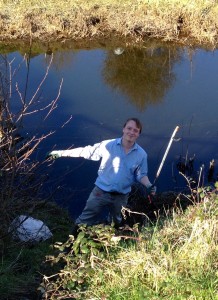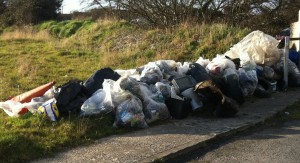It really bugs me that many people are in denial about sexism and harassment in the tech industry. Some engineers, developers and other professionals in the tech sector have been incredibly brave about sharing their experiences over the past few years, and I think they’re worth highlighting:
User Experience expert and speaker Johanna Krollman:
A talk at a conference showing girls in bikinis. An API presentation from a sponsor featuring ladies in bras. A demo at a hack day with a slide of women in underwear. A business model canvas workshop using a strip club as an example to illustrate the tool.
These are just a few examples of casual sexism I’ve experience at (tech) events. It’s common for at least part of the audience to react with laughter – sexism is entertainment. I’ve observed that the photo, comment or story gets laughs from the audience, gets attention. No wonder it feels like it’s ok.
Susan Fowler, engineer and author, on her time working at Uber:
After the first couple of weeks of training, I chose to join the team that worked on my area of expertise, and this is where things started getting weird. On my first official day rotating on the team, my new manager sent me a string of messages over company chat. He was in an open relationship, he said, and his girlfriend was having an easy time finding new partners but he wasn’t. He was trying to stay out of trouble at work, he said, but he couldn’t help getting in trouble, because he was looking for women to have sex with. It was clear that he was trying to get me to have sex with him, and it was so clearly out of line that I immediately took screenshots of these chat messages and reported him to HR.
Uber was a pretty good-sized company at that time, and I had pretty standard expectations of how they would handle situations like this. I expected that I would report him to HR, they would handle the situation appropriately, and then life would go on – unfortunately, things played out quite a bit differently. When I reported the situation, I was told by both HR and upper management that even though this was clearly sexual harassment and he was propositioning me, it was this man’s first offense, and that they wouldn’t feel comfortable giving him anything other than a warning and a stern talking-to. Upper management told me that he “was a high performer” (i.e. had stellar performance reviews from his superiors) and they wouldn’t feel comfortable punishing him for what was probably just an innocent mistake on his part.
(Fowler then goes on to describe how this wasn’t actually the manager’s first offence, and how she was given negative performance reviews as a result of highlighting behaviour such as this)
Engineer Katy Levison:
I have been raped by a colleague — not just once, but several times over months. A second colleague at a different institution held me against a wall against my objections and struggles and hit me with objects for his own amusement. My female colleagues told me later that he raped some of them, and in much the same way I had been raped by my rapist. I’ve had a colleague scream at me that everything good I ever had was given to me because I was a girl and that if were a boy, nobody would even know my name. He screamed it in public to humiliate me. The worst part was that, as I told him to go fuck himself and tried not to cry, I couldn’t prove to myself that what he said wasn’t true. Nor could I prove it to myself later, lying awake in bed.
Software engineer Tracy Chou on her internships at Facebook and Google:
My fellow interns and full-time coworkers were first friendly, then flirty. They floated awkward pick-up lines and complimented me on the way I looked, not the work I produced. One offered to give me a massage “because I looked stressed.” Another tried to get me to watch a movie with him in a dark room with the door locked and blinds closed. Later, he gave me a custom-made t-shirt with his name emblazoned across the front.
Product manager Leah Weitz, on things men have said to her at tech events:
“I was hoping to talk to someone who can actually explain what your company does. Are any of those guys available?” [points towards male coworkers]
“What size t-shirt are you wearing?” [stares at my bust, smirking] “Can you turn around for me so I can see the back?”
[discussing a widely-circulated piece of writing that I authored] “Who wrote that? Did you write that? [points at male coworker to my left] Oh. Did you, then? [points at male coworker to my right] Wait, so you wrote that?”
Chief Marketing Officer at a social media startup, Lisa Barone:
I remember being at a popular conference, sitting amongst my colleagues, and having a gentleman attending put his hand on knee while asking me what company I worked for. I remember the same man then removing his hand only to put his arm around me. And leave it there.
I remember being alone in the elevator with an employee of popular conference and being asked if I wanted to go back to his room to “have a drink or something”.





